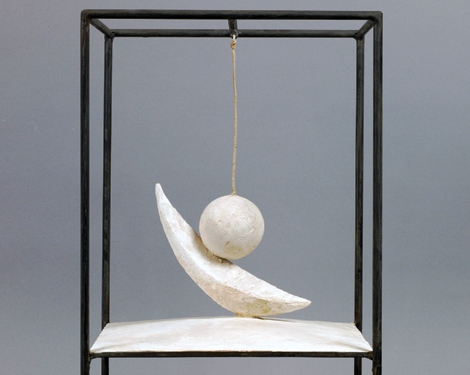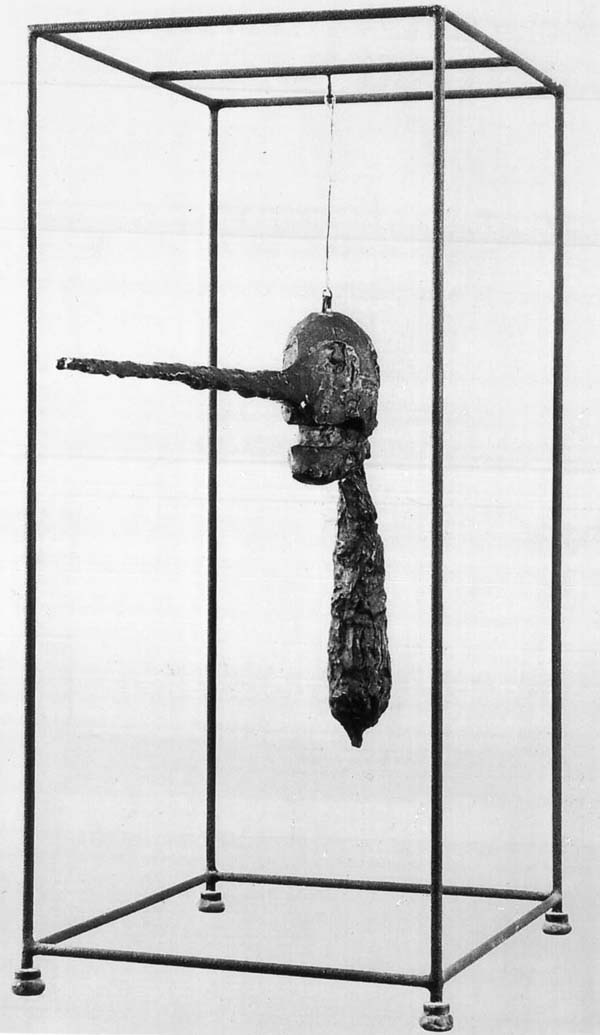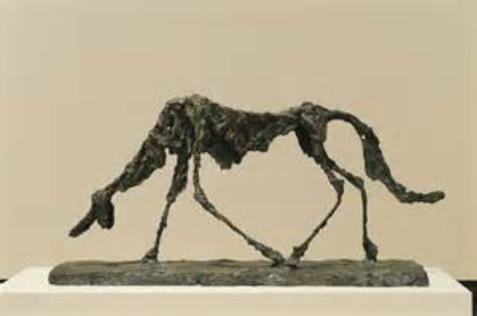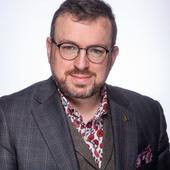An Artist for Dark Times: Giacometti at the Guggenheim Museum
From the beginning Donald Trump’s administration has been marred by corruption and outright contempt for the rule of law – with the president’s firing of FBI Director James Comey “because of the whole Russia thing”, and persistent efforts to undermine Robert Mueller’s Russia probe; with his refusal to divest himself of private businesses, his attacks on judges who rule against him, and much else besides. Trump’s shameless claim to unbounded executive power manifested itself recently in repeated calls to deprive unauthorized immigrants of their due process rights. The conditions in migrant detention centers are horrifying and photos from one facility in McAllen, Texas showed children being held in cages. According to Senator Elizabeth Warren’s Facebook report, this border facility is an enormous warehouse “filled with cages. Cages for men. Cages for women. Cages for mamas with babies. Cages for girls. Cages for boys.”
Such an unconscionable state of affairs makes the current exhibition of Alberto Giacometti at the Guggenheim Museum in New York City all the more electrifying. The show features more than one hundred and seventy-five sculptures, paintings, and drawings, spanning more than forty years and across all the various media with which he worked.
The show is a major retrospective of one of the twentieth century’s most significant artists: a painter and sculptor who sought the core of life – the alienation, and isolation, the terror of living, of walking through modernity, its cities, and city squares, its lonely crowds, its stricken men and women. The exhibition reveals an obsessive artist, one who returned again and again to the same motifs: including cages and bars; wiry, naked human figures, with outsized feet, sometimes in movement, sometimes utterly still and erect – but ultimately they are homeless, living in a “no-man’s land… lost in infinite nothingness.”
Alberto Giacometti (1901-1966) was born in the Swiss village of Borgonovo, the eldest son of Giovanni Giacometti, a recognized post-impressionist painter. In 1922 he moved to Paris and quickly joined the Parisian avant-garde movement. He would remain in Paris for the majority of his life. His early work experimented with cubism; and in 1930, under the influence of André Breton, he would join the surrealists.

The embrace of surrealism was announced with Giacometti’s unveiling of Suspended Ball (1930-31), a sculptural composition which proved to be a turning point in the artist’s career. The work displays a notched plaster ball hanging from a string in a metal cage; while just below the gouged out slit is a crescent-shaped object, with distinctly phallic overtones. Salvador Dali observed that, “The beholder instinctively feels the urge to slide the ball over this edge…” – and it was on the basis of this sculpture that he developed the concept of the “symbolically functioning object.”

Woman with Her Throat Cut (1932) is a nightmarish composition in bronze: the female, more animal than human, lies splayed on the ground, her throat rendered as an exposed windpipe with the carotid slashed. It is a profoundly disquieting work, unsettling in the suggestion of rape and murder, and the insect-like morphology of the figure. While it resonates with themes that run throughout the show, it is also quite unlike anything else we find.
 Hands Holding the Void or Invisible Object (1934), a large-scale depiction of an entire female figure, is one of Giacometti’s masterpieces, and the last he composed while still a member of the surrealists. The figure’s stance and positioning of her arms has echoes of Mesoamerican cultic statuary; the odd rectangular base, however, reveals itself to be some form of incarceration, so that once again we have an evocation of violence and subjugation. It is an extraordinary and mysterious work, with a hauntingly strange beauty.
Hands Holding the Void or Invisible Object (1934), a large-scale depiction of an entire female figure, is one of Giacometti’s masterpieces, and the last he composed while still a member of the surrealists. The figure’s stance and positioning of her arms has echoes of Mesoamerican cultic statuary; the odd rectangular base, however, reveals itself to be some form of incarceration, so that once again we have an evocation of violence and subjugation. It is an extraordinary and mysterious work, with a hauntingly strange beauty.
By 1935, Giacometti had turned away from surrealism and a decade of low productivity followed. However, in the mid-1940s, with the end of World War II, the artist enjoyed a new burst of creativity. It is the work beginning from this period that established Giacometti as the artist of modern alienation par excellence. His figures are bereft of all social connection; they are utterly and irretrievably alone even when surrounded by others. As the artist once observed: “A man who suffers from solitude can suffer alone, but he can also suffer in the midst of other people.” A man might feel isolated even in a crowded space. “The sublime, the mystery,” he would say, “lies precisely in the faces of these lone individuals...”

One of the standout paintings from this period is Two Standing Women and Figurine in a Cage (1950). An oil painting on wood panels that were once part of the walls of Giacometti’s studio in Stampa, Switzerland, the work is yet another example of the cage as a recurring motif throughout the artist’s career. Giacometti’s portraits tend to be dark, making use of a gray palette – almost monochrome save for the use of dramatic highlights – and present their subjects as fundamentally ungraspable: the other cannot be known, and always remains essentially outside our reach.
His work is not about creating beautiful or enjoyable objects, it is not about producing pleasurable experiences or delighting the viewer. Indeed, in some cases his work seems designed to do quite the opposite: to cause us discomfort, to make us uneasy, to make us feel the anguish and the burden of existence. Giacometti’s art is essentially a tragic one: there is little relief, even less humor – his is an art that returns compulsively to the beginning, seeking simply to start, to commence truthfully. Sartre was certainly right when he said that there was no progress in art for Giacometti. All of art was there at the beginning; and, not surprisingly, in Giacometti we find a fascination with primitive styles – including African, Oceanic, and Cycladic.
 The exhibition comes to a close with The Dog (1961), the sole sculpture of an animal to be included – and one that was apparently a kind of self-portrait: “One day I saw myself in the street just like that. I was the dog.” It is an immediately appealing work: a scraggly canine with a long snout pointing to the ground, large floppy ears and a generous tail. Like so many of his human individuals, this is a creature that knows what it is to be alone and dejected, and it is a fitting end to a thoroughly mesmerizing show. It is the final proof – if any were needed – that here is an artist who sought “To bite into reality... to see better, to understand better the things around me... to be more free... to discover new worlds...”
The exhibition comes to a close with The Dog (1961), the sole sculpture of an animal to be included – and one that was apparently a kind of self-portrait: “One day I saw myself in the street just like that. I was the dog.” It is an immediately appealing work: a scraggly canine with a long snout pointing to the ground, large floppy ears and a generous tail. Like so many of his human individuals, this is a creature that knows what it is to be alone and dejected, and it is a fitting end to a thoroughly mesmerizing show. It is the final proof – if any were needed – that here is an artist who sought “To bite into reality... to see better, to understand better the things around me... to be more free... to discover new worlds...”
To cure the ills of society is too much to ask of any art or artist. But when a body of work – because it comes from a place of truth and universality – is able to reflect the horrors of the moment in which we live, then it is incumbent upon us to give it serious attention.
Whatever else we might say, Giacometti’s oeuvre offers an important corrective to the Trumpian conviction that we can safely know and essentialize the other, which the president consistently demonstrates both in his dehumanizing speech (referring to people as “animals”) and actions (throwing them into cages). In short, we cannot afford to overlook a body of work as timely as this.

















